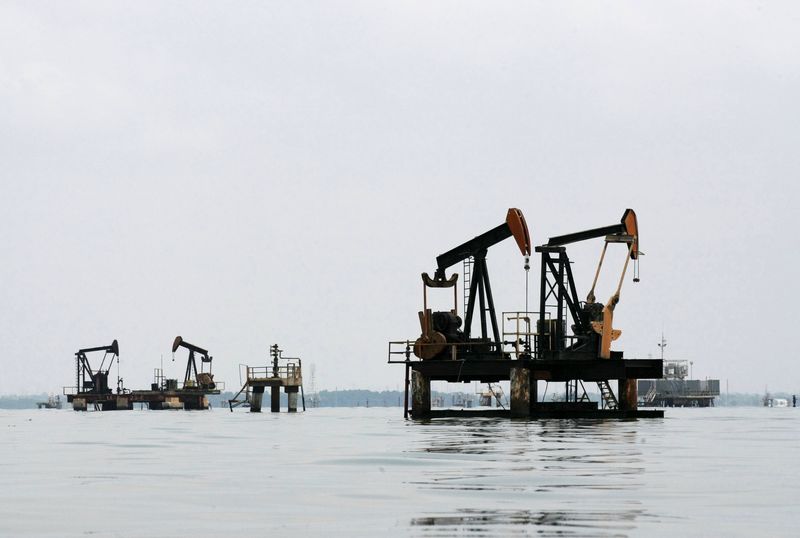Bitcoin price today: slips below $113k, near 6-wk low despite Fed cut bets
(The opinions expressed here are those of the author, a
columnist for Reuters.)
By Clyde Russell
LAUNCESTON, Australia, Aug 11 (Reuters) - Saudi Aramco sees
a recovery in global oil demand, a view that would justify the
paltry reduction in the price the world's biggest crude exporter
will charge refiners in Asia for cargoes loading in September.
Customers probably have a different view.
Aramco 2222.SE Chief Executive Amin Nasser told reporters
on Aug. 9 that demand was recovering as countries try to restart
economies after lockdowns aimed at curbing the spread of the
novel coronavirus pandemic.
"Look at China, their gasoline and diesel demand is almost
at pre-COVID 19 levels. We are seeing that Asia is picking up
and other markets (too)," he said, after announcing the
state-controlled oil giant's quarterly results.
Asia is the key market for Saudi crude, but while there are
some signs demand is past its lowest point, it is also likely
that it is well short of pre-coronavirus levels, with the
exception of China.
Nasser's comments on demand can be viewed in the context of
Aramco's decision last week to cut the Official Selling Price
(OSP) for its flagship Arab Light crude for September-loading
cargoes for Asian customers by 30 U.S. cents to a premium of 90
U.S. cents over the Oman/Dubai average.
The reduction was at the lower end of expectations in a
Reuters survey of Asian refiners polled ahead of the
announcement, and the modest price cut will do little to relieve
pressure on already weak refinery profit margins.
Some refiners were reported by Bloomberg to have cut the
amount of crude they will buy from Aramco in September under
their term contracts, which typically allow some variation in
contracted volumes by either the seller or buyer.
There are various measures of refinery margins, but all of
them are telling the same story, namely that Asian refiners are
doing it tough.
One such measure is the profit of processing a barrel at a
Singapore hydrocracking refinery SGCSCRKMc1 , which dropped to
just 75 U.S. cents a barrel on Monday, not far off the low this
year of 10 cents on June 30.
The margin is well below profits of around $3-$5 a barrel
that prevailed in the first quarter of the year.
For the main individual products, gasoline remains weak,
with the profit from processing a barrel of Brent crude at a
Singapore refinery just $1.93 a barrel on Monday, which is
better than the losses that were being incurred from mid-March
to mid-May, but still well below the $3-$10 range from the
second half of 2019.
The profit on producing a barrel of gasoil GO10SGCKMc1 ,
the building block for diesel and kerosene, was at $5.80 a
barrel on Monday, higher than the low this year of $1.77 on May
5, but also well short of the $13-$19 range from the second half
of 2019.
DEMAND RECOVERY: REALITY OR HOPE?
While refinery margins are weak currently, is Aramco's view
that demand is recovering in Asia correct? If so, is that
recovery enough to drive refinery margins back to levels that
allow the businesses to operate sustainably?
To answer this, it's best to separate China from the rest of
Asia currently, given its different set of dynamics.
China appears to be achieving the much-vaunted V-shaped
economic recovery, and given it was the first to be hit by the
coronavirus and the first to recover, it's ahead of the rest of
the region.
But China's super-strong run of crude oil imports comes with
a caveat, insofar as they are likely coming to end as the last
of the super cheap oil snapped up during the brief Saudi
Arabia-Russia price war arrives this month.
China's imports in July were 12.08 million barrels per day
(bpd), down from June's record 12.94 million bpd, but still the
second-highest. In fact, the three biggest monthly imports have
been the last three months.
But while August is likely to see China's import strength
continue, the bigger question is what happens from September
onwards, given that China is unlikely to buy crude for storage
at the same rate, now that prices have recovered.
With regional markets for refined fuels also still well
supplied, Chinese refiners may struggle to sell excess product
overseas, and even if they do it will be at the expense of
refinery margins.
India, the second biggest importer in Asia behind China, is
showing some signs of recovery in demand, with Refinitiv Oil
Research estimating July imports at 3.75 million bpd, up from
3.44 million bpd in June.
But these are well down on levels prior to the coronavirus
lockdowns in India, with March imports at 4.8 million bpd and
February's at 4.78 million bpd.
Japan, South Korea, Taiwan and Singapore all show similar
patterns to India, with some recovery in import demand, but
still short of levels prior to the coronavirus.
This makes Aramco's decision to deliver only a modest price
cut to its Asian customers risky.
(Editing by Richard Pullin)
